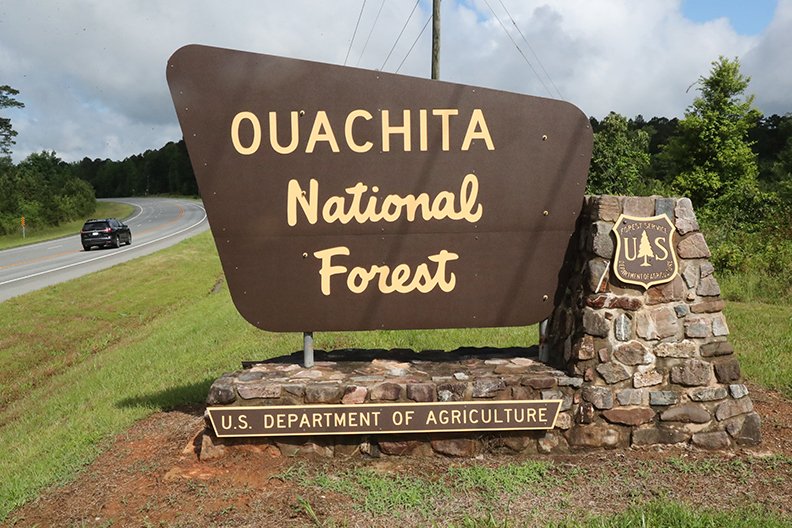The U.S. Department of Agriculture announced this week it will dole out $1.1 million to ramp up forest management programs in Arkansas and Oklahoma to maintain habitats for an endangered species and control wildfires.
The funding will go toward habitat management projects in the Ouachita National Forest meant to maintain shortleaf pine-bluestem grass communities, home to the endangered red-cockaded woodpecker.
Funds for the project will reestablish a federal program, which began in 2012, where the U.S. Forest Service does prescribed burns and tree thinning to maintain the bird's habitat.
The original program ended in 2021 with the U.S. Forest Service only completing roughly 50% to 60% of the prescribed burns it planned to do, according to Steve Cole, an integrated resources officer with the U.S. Forest Service based in Hot Springs.
"So we're trying to accelerate the restoration of shortleaf pine-bluestem grass habitats," Cole said.
The red-cockaded woodpecker has been on the endangered species list since 1970 due to the destruction of their habitat from commercial logging. The bird nests in old-growth shortleaf pine trees.
"A lot of its habitat has been lost due to conversion of forests to pine plantations," said Dan Scheiman, an ornithologist with Audubon Delta in Little Rock.
Prescribed burns help maintain the bird's habitat through removing competing vegetation and managing the forest's understory. Thinning, or cutting down of select trees, reduces the forest's density.
For the red-cockaded woodpecker, a thin forest makes it easier for sunlight to penetrate through and for the birds to freely fly among the canopies, Cole said.
"This is a species that needs mature, open pine forests where the trees are wildly spaced, there's a herbaceous ground cover," Scheiman said. "It's the kind of habit that is maintained by periodic fire."
The area in the Ouachita National Forest targeted for prescribed burns and tree thinning is located near Waldron, and an area in Broken Bow, Okla., Cole said.
The U.S. Forest Service said the additional federal funds will help bring "economic benefits," which will largely take place through contracting for prescribed burns and sale of timber.
While wildfires in Arkansas are not as devastating as those in California, they remain a concern for forestry officials, with about 56% of the state covered by forests. Earlier this month, a wildfire in Grant County prompted more than 20 families to flee their homes.
Wildfires can cause devastation in neighboring communities.
Prescribed burns are used to help remove dead vegetation which can serve as kindling for wildfires, while also helping maintain the forest's ecosystem.
At roughly 1.8 million acres, the Ouachita National Forest is one of the largest federal forests east of the Rocky Mountains.
A host of federal and state entities, as well as private and commercial landowners, are responsible for maintaining the woodlands in the state.
Joe Fox, Arkansas State Forester, said a group of federal and state bureaucracies, non-profits and industry officials -- who are called the Arkansas Prescribed Fire Council -- coordinate controlled burns of forests.
Maintaining forests in Arkansas can be tricky, especially with a need to balance the sometimes competing interests among conservationists, industrialists and taxpayers.
"We can have commercially productive forests and we can have forests that we have endangered species on," Fox said. "And in a lot of cases that can be the same place."

